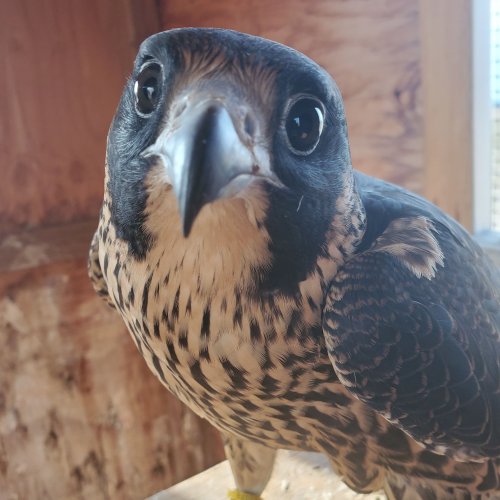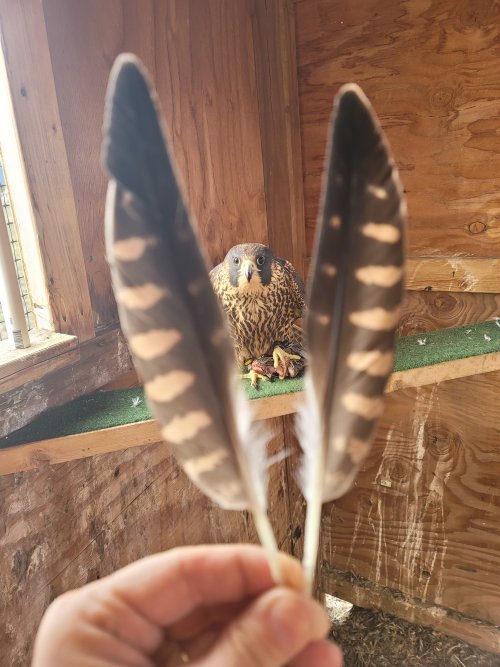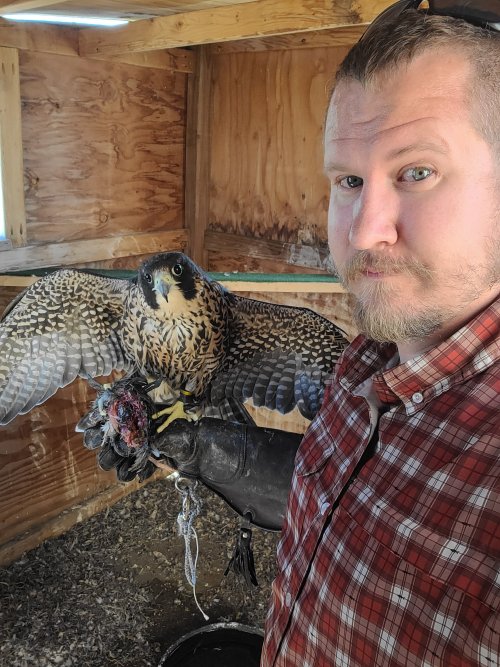406LIFE
Well-known member
- Joined
- Aug 18, 2016
- Messages
- 3,112

Some of you followed my journey with Grinnell, and now I am on a new one with Freyja. Falcons and Hawks are very different and I am finding that to be true on many levels.
Quick facts:
-Hatched three months ago.
-Her name is pronounced fre-ya, a Norse Goddess.
-We have peregrine's in the wild thanks to falconers after DDT, see Peregrine Fund.
- We will be chasing ducks, pheasants, and quail.
-She wears some jewelry on her right ankle, a permanent band for ID.
-She weighs in at 1040g.
I'll prob post updates infrequently here, but you can find more on Freyja and falconry on my IG: @everettheadley






